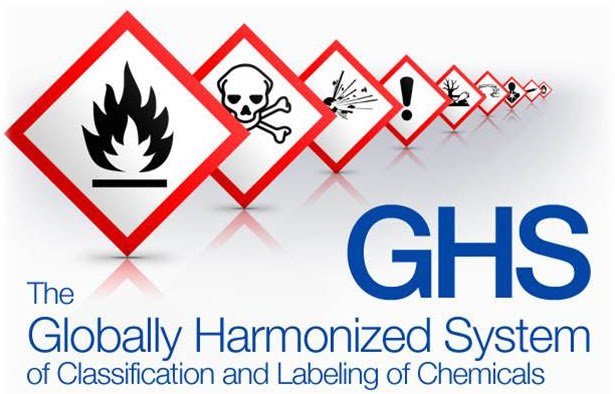The GHS Compliance Deadline is Drawing Closer, Are You Prepared?

In June of this year, GHS regulations will be implemented by OSHA that change the hazard communication standards for chemical classification and will impact labeling and Material Safety Data Sheets (MSDS). It’s critical that water treatment professionals understand the new standards and take appropriate actions in order to be compliant. Failure to do so will likely result in serious fines for business owners.
Are you prepared for the new changes as a result of GHS? Read on to learn more about what steps you need to take to ensure compliance and avoid penalties.
What Is GHS?
GHS stands for the Globally Harmonized System of Classification and Labeling of Chemicals. The United Nations developed GHS to ensure the chemical handling, transportation, storage and use of chemicals around the world is the same for every country and every company. In short, it is an international attempt to get everyone on the same page. This internationally agreed-upon system seeks to harmonize multiple existing methods and standards, such as the Hazard Communication Standard, and transition them into one, uniform understanding of safe chemicals handling and use, no matter the location.
Who Needs to Comply with GHS?
Put simply, anyone who manufacturers, transports, stores, handles, sells, buys or uses hazardous chemicals must comply with the GHS regulation. All employers with hazardous chemicals in their workplaces must have labels and safety data sheets for their exposed workers, and train them to handle the chemicals appropriately.
What Are the Changes Being Made As a Result of New GHS Regulations?
The three major areas of change involve hazard classification, labels, and safety data sheets.
- Hazard Classification: Hazard definitions have been changed to provide a set of more specific criteria for health and physical hazards, as well as mixtures. Specifying the criteria more closely ensures consistency across manufacturers and that labels and safety data sheets are more accurate as a result.
- Labels: Chemical manufacturers and importers will be required to provide a multi-color label that includes a harmonized signal word, pictogram, and hazard statement for each hazard class and category. Precautionary statements must also be provided. All of this in accordance with the new Hazard Classification definitions for each product or mixture.
- Safety Data Sheets: MSDS’s will now become SDS’s and will have a specified 16-section format. The Hazard Classification data will have to be updated as specified in the regulation.
What Do I Need to Do To Be GHS Compliant?
- Update Your MSDSs: You will need to update your Material Safety Data Sheets, now SDSs. Under the new regulations, they will need to be 16-section formatted safety data sheets that will include updated hazard classification information. In addition, your product will need to be reclassified under the GHS system to make sure the classification of hazards meets the new criteria. For mixtures, this will result in laborious hand calculations, or the use of sophisticated software for proper compliance with the new regulations.
- Update Your Labels: All product labels will require updating to properly communicate the hazards as calculated and spelled out in the regulations. The hazard pictograms, that are also now required on the labels, must be printed in two colors, red and black. Custom labels will still be allowed.
What Will GHS Compliance Cost My Business?
According to OSHA, the total cost to meet the GHS regulations for the chemical industry is an estimated $201 million a year in the US alone. Costs to individual businesses will vary but are expected to be significant for small manufacturers, with cost estimates as high as $500 per SDS revision or total costs as much as $50,000 in some cases for a small business to become compliant. The costs involve re-classifying chemicals, re-authoring Safety Data Sheets, and training workers on the new classification structure and labels.
However, QualiChem will support all of our private label water treatment customers with the transition to ensure compliance with the requirements set out for GHS at no additional cost.
We will confirm that all labels and SDS’s are compliant as required by the GHS regulations. Our goal is to make sure that these new standards do not become a financial burden on our customers or stand in the way of our customers’ continued growth and profitability.
Questions?
If you have any questions about GHS or the new regulation changes, we’re available to answer your questions any time.
We will be providing GHS updates over the coming months. Subscribe to the blog to stay posted on the latest with GHS and other water treatment topics.



